
Two glass blocks of triangular cross section (
a)
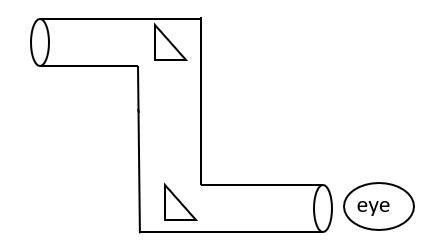
b)
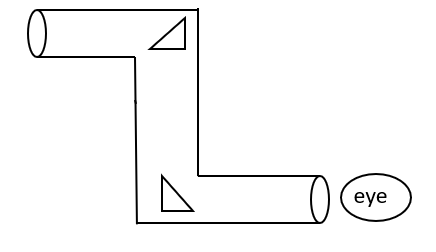
c)
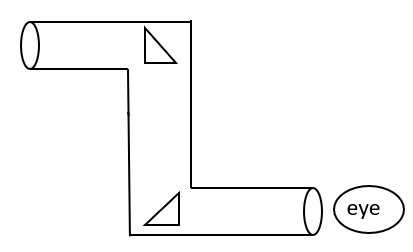
d)
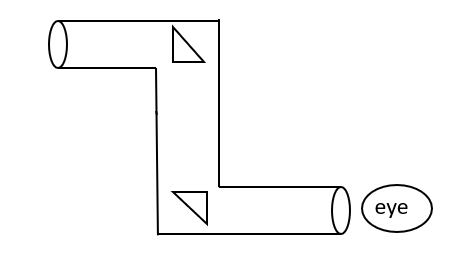




Answer
417.9k+ views
Hint:A periscope runs on the Reflection Laws, which says that the light from the object comes on one mirror at a
Complete step-by-step solution:
Given: Refractive index of glass,
We will use the formula of critical angle and refractive index.
where,
n is the refractive index.
Put
If the angle of incidence is greater than the critical angle, the ray will get reflected back from the surface.
The angle of incidence is greater than
Fourth arrangement will be perfect for this condition.
First, the light will fall on the primary triangular glass, then it will be reflected from the surface, then fall on another glass, and then again it will reflect and then reach the eye.
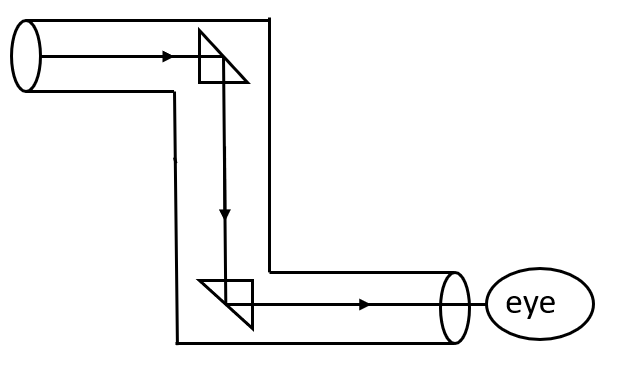
Option (d) is correct.
Note:A periscope is a visual instrument that permits objects that are not in a direct line of sight to be observed. Periscopes have shown to be of great help to submariners by permitting these professions to view over the surface of water and aid navigation underwater.
Complete step-by-step solution:
Given: Refractive index of glass,
We will use the formula of critical angle and refractive index.
where,
n is the refractive index.
Put
If the angle of incidence is greater than the critical angle, the ray will get reflected back from the surface.
The angle of incidence is greater than
Fourth arrangement will be perfect for this condition.
First, the light will fall on the primary triangular glass, then it will be reflected from the surface, then fall on another glass, and then again it will reflect and then reach the eye.

Option (d) is correct.
Note:A periscope is a visual instrument that permits objects that are not in a direct line of sight to be observed. Periscopes have shown to be of great help to submariners by permitting these professions to view over the surface of water and aid navigation underwater.
Latest Vedantu courses for you
Grade 10 | CBSE | SCHOOL | English
Vedantu 10 CBSE Pro Course - (2025-26)
School Full course for CBSE students
₹37,300 per year
Recently Updated Pages
Master Class 4 Maths: Engaging Questions & Answers for Success

Master Class 4 English: Engaging Questions & Answers for Success

Master Class 4 Science: Engaging Questions & Answers for Success

Class 4 Question and Answer - Your Ultimate Solutions Guide

Master Class 11 Economics: Engaging Questions & Answers for Success

Master Class 11 Business Studies: Engaging Questions & Answers for Success

Trending doubts
Give 10 examples of unisexual and bisexual flowers

Draw a labelled sketch of the human eye class 12 physics CBSE

a Tabulate the differences in the characteristics of class 12 chemistry CBSE

Differentiate between homogeneous and heterogeneous class 12 chemistry CBSE

Why is the cell called the structural and functional class 12 biology CBSE

Differentiate between insitu conservation and exsitu class 12 biology CBSE




